Virus is a microscopic organism that must infect a living cell to reproduce. A virus is a parasite—that is, an organism that depends for its survival on another organism, called its host. All living things are exposed to viruses every day. Viruses infect all forms of life, including animals, plants, bacteria, and other microbes. Viruses cause many diseases, such as AIDS, influenza, measles, poliomyelitis, smallpox, and yellow fever. They can also cause certain cancers. Each year, millions of people throughout the world die or become ill from viruses. Viruses also infect crop plants and livestock, having a major effect on the global economy. However, some viruses can reproduce in organisms without harming them.
Viruses are simpler than the smallest bacteria. They are so simple that virologists (scientists who study viruses) disagree whether viruses are living things. Viruses are not made up of cells. Instead, they exist as particles. Many scientists think that a virus particle, called a virion, is simply a complex chemical that cannot reproduce by itself and is clearly lifeless. It lacks any means to produce or use energy or to combine chemicals that are necessary for life. Once it enters a living host cell, it directs that cell’s systems and materials to make and release many copies of the virus. Viruses reproduce, a characteristic shared by all living things.
Viruses reproduce by manipulating or “hijacking” the natural functions of the host cell. Consequently, scientists can use viruses to study how cells function. They have learned many of the fundamental principles of molecular biology by studying animal viruses and their effect on cells.
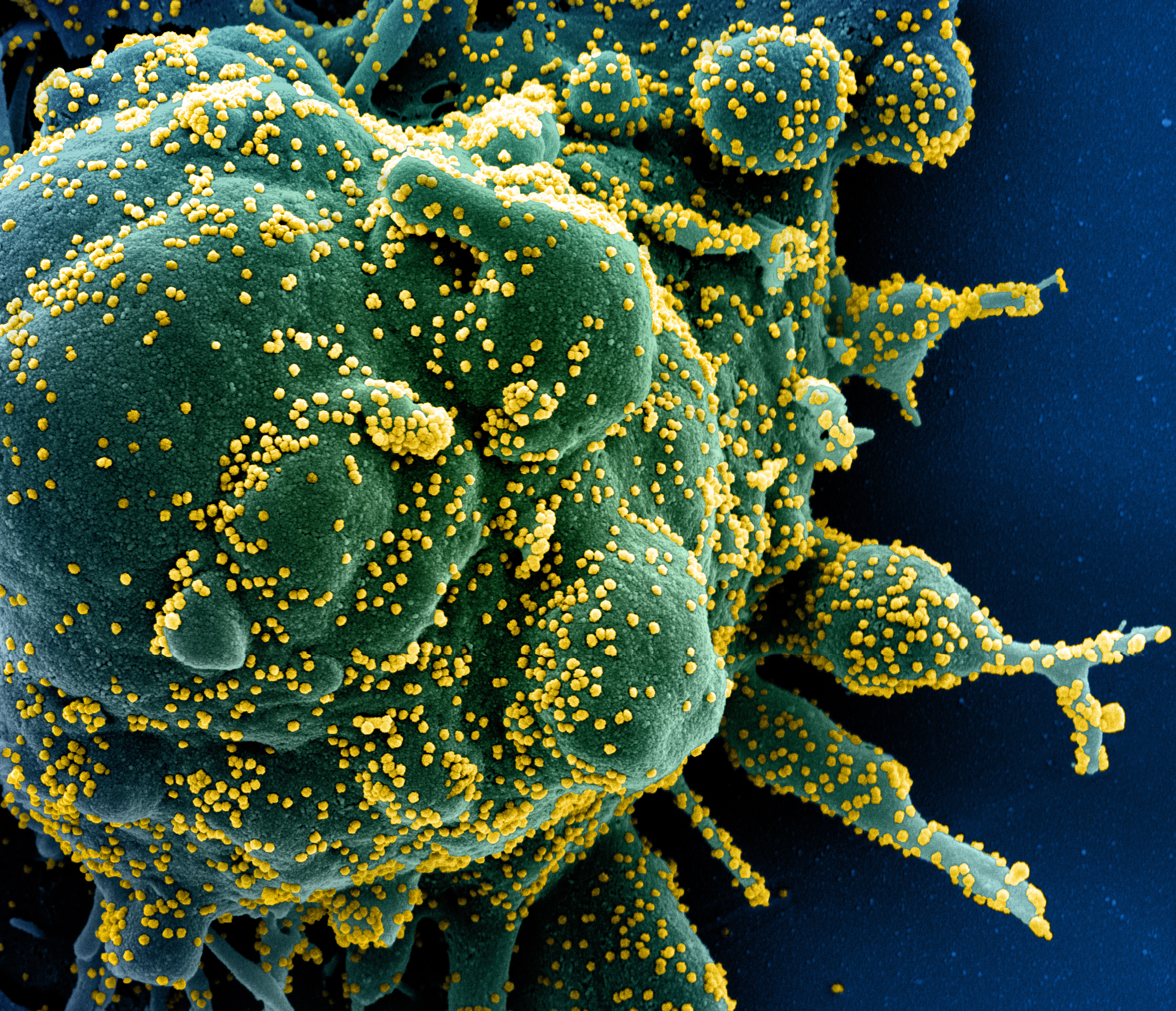

Discovery.
The field of virology began in 1892. In that year, the Russian scientist Dimitrii Ivanovsky was studying a plant disease called tobacco mosaic disease. He observed that it was caused by a particle so small that it passed through filters used to remove bacteria. In 1898, a Dutch botanist named Martinus Beijerinck made the same observation. He named this unseen particle a virus, a Latin word meaning poison. That same year, the German scientists Friedrich Löffler and Paul Frosch found that a similarly tiny agent caused foot-and-mouth disease in cattle.

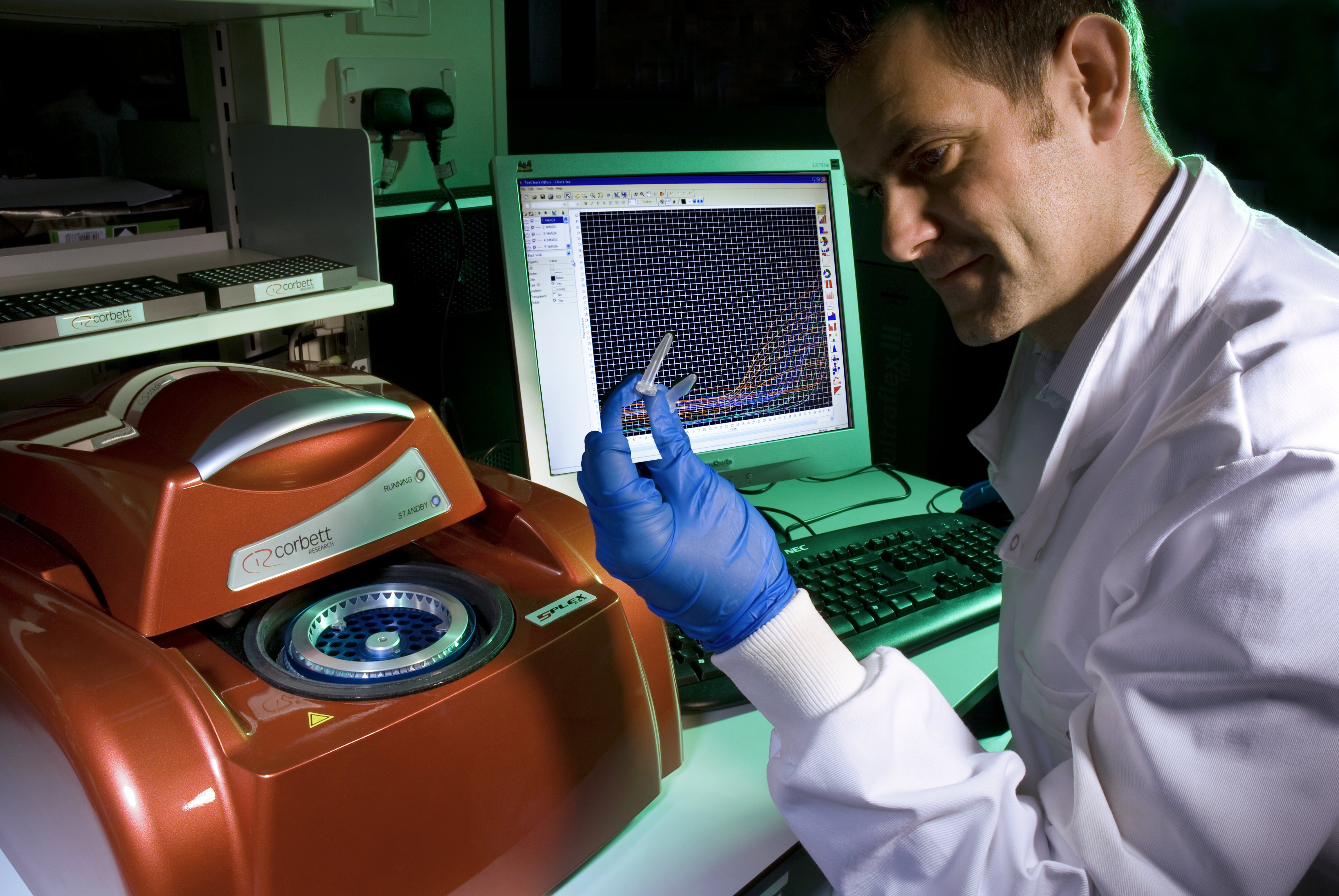
The disease-causing viruses were too small to be seen with microscopes. But scientists continued to identify viral diseases. In 1901, scientists discovered that a virus caused yellow fever in humans. Other important human viruses were soon identified, including rabies virus, poliovirus, and human influenza virus.
By 1911, scientists demonstrated that viruses can cause cancer in animals. They identified two viruses that cause cancers called leukemia and Rous sarcoma in chickens.
In 1935, the American biologist Wendell M. Stanley showed that viruses contain protein that can be crystallized and studied. The field of virology was revolutionized in the 1930’s with the development of the electron microscope. For the first time, scientists could see virus particles.
Structure.
Early scientific studies revealed that virus particles are extremely small and much simpler than cells. Viruses range in size from about 0.01 to 0.8 micron. A micron is 0.001 millimeter or 1/25,400 inch. Most viruses can be seen only with an electron microscope, which magnifies them by thousands of times. Some viruses, however, can be relatively large. The largest viruses, the giant mimivirus and a virus called the megavirus, are about 0.8 micron in diameter. They are as large as some bacteria and can be seen with a traditional microscope.
A typical virus consists of a core of genetic (hereditary) material wrapped in a protective outer coat. The genetic material is called the viral genome. It consists of either DNA (deoxyribonucleic acid) or RNA (ribonucleic acid). The genome carries the entire set of instructions for producing new virus particles within a host cell.
The outer coat protects the viral genome from damage by chemicals, radiation, changes in temperature, and other environmental hazards. The coat enables the viral genome to exist outside of a host and to be transmitted from one host cell to another. The coat must be extremely stable and durable. However, it must also be easily disassembled once the genome is inside a host cell.
Viruses come in many different sizes and shapes and are composed of different materials. Some viruses consist only of viral RNA joined with protein in a coiled, ribbonlike structure. Scientists describe such viruses as having helical symmetry. This group includes the tobacco mosaic virus. Another group of viruses have a helically symmetrical core surrounded by a membrane. The membrane is constructed from materials that make up the host cell. Such viruses include influenza and measles viruses. Other viruses consist of proteins assembled into a 20-sided structure called an icosahedron. Scientists describe these viruses as having icosahedral symmetry. Such viruses include poliovirus and the virus that causes the common cold. In some cases, such as herpesvirus, the icosahedral viruses are encased by a membrane. 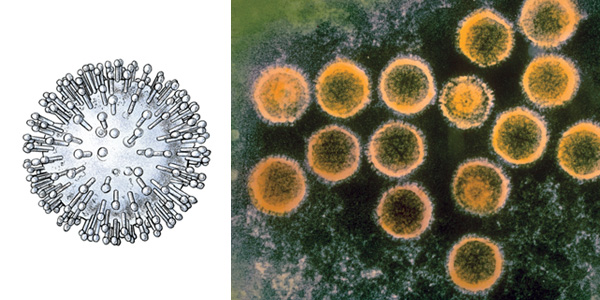
Many viruses, such as poxviruses and bacteriophages, have more complex structures. The word bacteriophage means bacteria eater. Many bacteriophages consist of a sphere-shaped “head,” which holds the genome, and a hollow, rod-shaped “tail” made of protein. This structure works like a hypodermic needle, injecting the viral genome into the host bacteria.
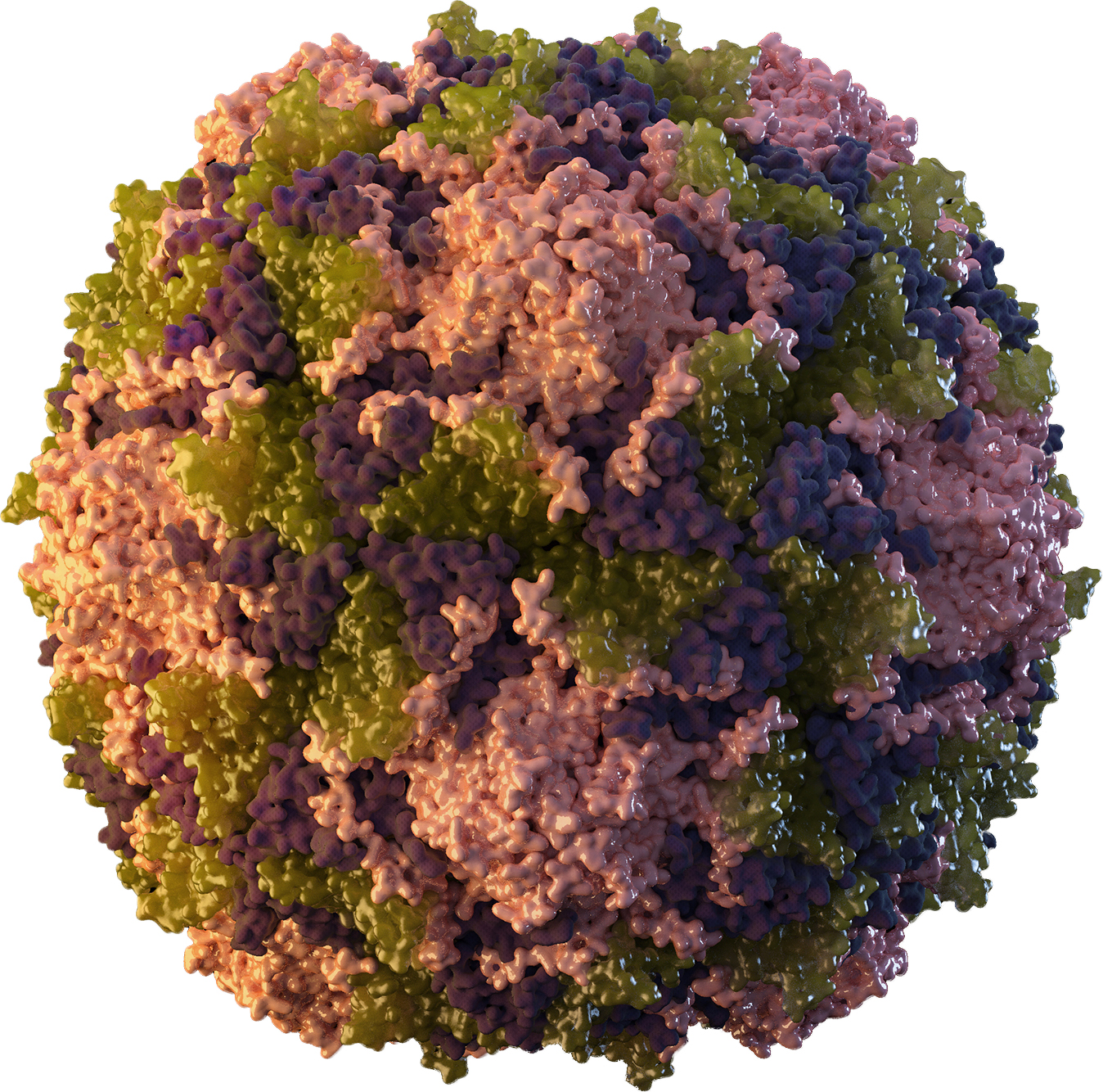
Infection.
Virologists call the reproductive cycle of a virus the viral infectious cycle. It can only take place within a host cell. Virologists use samples of infected cells called cell cultures to study the stages of the viral infectious cycle.
Infection begins when a virion collides with the surface of a cell. Virions have no means of locomotion. They must be carried to the cells they infect by air currents, in bodily fluids, or through some other means. Virions do not infect all the cells that they encounter. They must attach to cells that have specific molecules on their surface called receptors. The receptors help bring the viral genome inside the cell and deliver it to the cytoplasm (cellular fluid) or the nucleus (core) of the cell. Most viruses reproduce only in specific cells of certain organisms. Each virus usually binds to only one kind of cell receptor.
Once the viral genome is within the cell, it takes control of the cell’s natural protein-making process. The infected cell begins to produce the proteins that are called for by the viral genome. The viral genome itself is also reproduced within the host cell.
The newly formed viral components assemble themselves into new virions within the host cell. The different components are often produced in different parts of the cell and thus must move to a central assembly point. Finally, the newly produced virions are released from the host cell. Some viruses, such as influenza virus, complete the assembly at the host cell’s surface, in a process called budding. In budding, part of the cell membrane is used to make the virus’s protein coat as the virus emerges. 
The release of virions from a host cell often kills the host. Bacteriophages produce proteins called lysins, which cause the bacterial host to rupture, releasing the virions. Viruses that infect animal cells may kill their host by interfering with the cell’s natural production of DNA or RNA. They may also trigger in the cell an otherwise natural self-destruction process called apoptosis (see Apoptosis). However, not all viruses kill their host cells.
Disease.
As viruses reproduce, they damage some of an organism’s cells, which can cause disease. Many symptoms of viral infection are caused by the host’s immune response to infection, rather than the virus itself. Such symptoms may include fever, aches, and nausea.
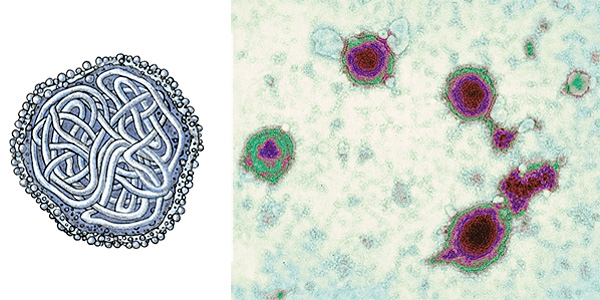
Most viruses reproduce only in specific cells within certain hosts. For example, poliovirus, the virus that causes polio, infects only humans. It only infects cells of the digestive tract, brain, and spinal cord. In humans, influenza virus reproduces only in cells of the respiratory system.
Physicians describe viral infections as either acute or persistent. An acute viral infection is marked by the rapid onset of illness. The onset is followed by a brief period of symptoms that usually go away within days. Persistent infections last longer.
In an acute viral infection, virions reproduce rapidly before being eliminated by the host’s immune system. Influenza and the common cold, often caused by rhinoviruses, are examples of acute viral infections. Acute infections often cause few or no symptoms. For example, about 90 percent of poliovirus infections cause no symptoms. During such infections, the virus replicates in the host but does too little damage to cause disease. Because such infections are not easily detected, they can contribute to the spread of virus.
Persistent infections occur when the initial infection is not cleared by the host immune response. Viruses that cause persistent infections include varicella-zoster virus (which causes chickenpox), measles virus, human cytomegalovirus (CMV), and HIV, the virus that causes AIDS.
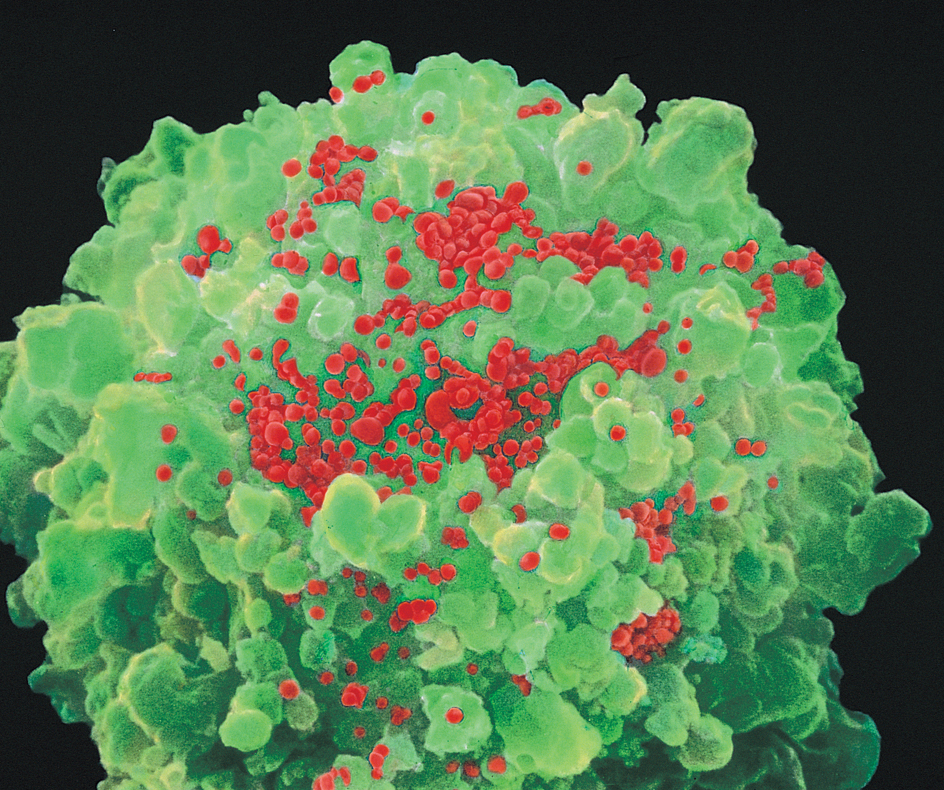
There is no single feature of a virus that leads to persistent infection. Some viruses do not kill cells. They may cause a persistent infection if the host’s immune system cannot eliminate them. In some persistent infections, periods of virion reproduction alternate with periods of inactivity. The Epstein-Barr virus, for example, which causes mononucleosis, establishes a dormant infection after the initial illness has passed. In this case, the viral genome persists in cells of the immune system. Periodically, the infection is reactivated and infectious virions are produced without causing symptoms. This enables the transmission of the virus to new hosts.
Immune response.
In humans and other animals, the skin acts as the first defense against viral infection. The skin and epithelium (cells that line various parts of the body) serve as a barrier to viruses and other germs. If a virus penetrates this barrier, the body’s innate (inborn) immune system is mobilized. This system, which is always active, recognizes the presence of virus by sensing the viral nucleic acid (DNA or RNA) or proteins. The cells of the innate immune system then produce a variety of proteins, called cytokines, to stop the viral infection. One group of cytokines, called interferons, help make proteins that disrupt different stages of the viral reproductive cycle.
Viruses may reproduce faster than the innate immune response can destroy them. If this occurs, the adaptive immune system is activated. There are two forms of the adaptive immune response, the humoral immune response and the cell-mediated immune response. They differ mainly in the parts of the immune system that are involved (see Immune system (The immune response)).
The humoral immune response involves cells called B lymphocytes. These cells produce large proteins called antibodies. The antibodies attach to virus particles and hinder their ability to infect cells. T lymphocytes, which are part of the cell-mediated immune response, can kill virus-infected cells.
A key feature of the immune response is the development of memory. The first immune system response against a virus—called the primary response—often takes days to develop. But repeat infections by the same virus are met immediately with a strong immune response that usually stops the infection within hours. This type of immune memory is maintained by the lymphocytes. These cells survive for years in the body. They remain ready to respond rapidly to any future infection by a particular virus. For this reason, many people who develop childhood viral infections remain immune to future infections by that virus as adults.
Vaccines
can prevent many viral infections. Vaccines provide immunity against certain viruses by activating the body’s adaptive immune response (see Immunization). Immunizing a number of individuals can halt the spread of a virus through a population.
In 1796, Edward Jenner, a British physician, developed a method of injecting people with cowpox to protect them from smallpox. The French scientist Louis Pasteur, who developed an injection against rabies in 1885, named this process vaccination. Since then, vaccines have been developed to combat many viral diseases, including influenza, measles, mumps, polio, and yellow fever. In 1980, the World Health Organization (WHO) announced that smallpox had been eliminated from all human populations through a global immunization campaign.
There are three main types of vaccines used to treat viruses: (1) inactivated vaccines, (2) attenuated virus vaccines, and (3) subunit vaccines. Inactivated vaccines are produced by growing large amounts of virus. Chemicals are then used to disable the virus’s ability to infect cells. The inactive virus still stimulates the body’s immune system, producing immunity against the virus. Attenuated virus vaccines consist of infectious viruses in a weakened form. The viruses replicate in the host but do not cause disease. However, immunity is achieved. Subunit vaccines include proteins identical to those that make the protective coat of a particular virus. These proteins can self-assemble into viruslike particles, but they lack the viral nucleic acid. They cannot infect cells or cause disease. When injected as a vaccine, they still activate the immune response, helping to develop immunity to the virus.
Antiviral drugs
may be used to block virus infections when no vaccines are available or in people who have not been immunized. Antiviral drugs usually do not cure viral diseases. But they can shorten the duration of the disease and lessen the severity of symptoms. Such drugs, however, are difficult to develop. The difficulty results from the fact that viruses depend upon host cells for much of their replication. It is thus difficult to identify drugs that block viral replication without harming the host.
Most antiviral drugs act on proteins that are unique to viruses. Examples include oseltamivir phosphate, sold under the name Tamiflu, and zanamivir, sold as Relenza. These drugs work against influenza. They attack only viral proteins and therefore have few side effects. However, they must be given within the first 48 hours of infection to be effective. Many antiviral drugs available today have been developed to treat HIV and herpesvirus. However, some viral strains have developed resistance to certain drugs, posing a serious problem.
Origin.
Scientists think that viruses probably appeared soon after the first living cells on Earth. Scientists also believe that new viruses develop from existing viruses. All viral diseases that affect humans are thought to have begun as zoonoses (diseases transmitted from animals to people). However, some human viruses are not found in any other animal. For example, the human poliovirus has no host except for humans. Other viruses related to poliovirus, however, do infect a variety of animals. Scientists believe that ancient forms of these viruses may have been transmitted from animals to humans.

